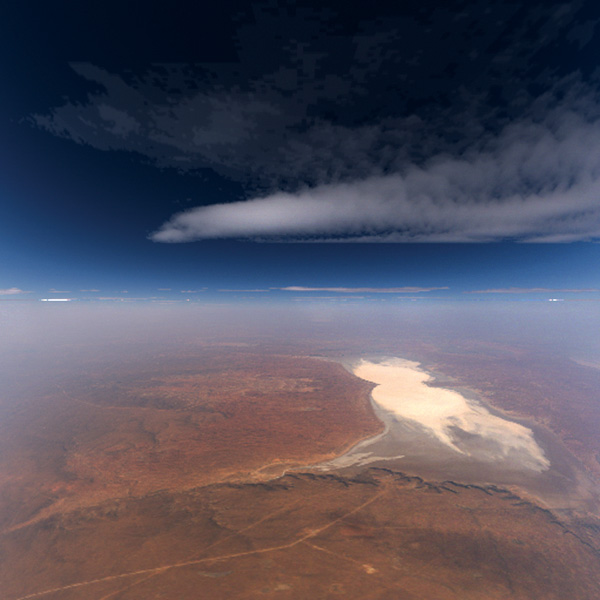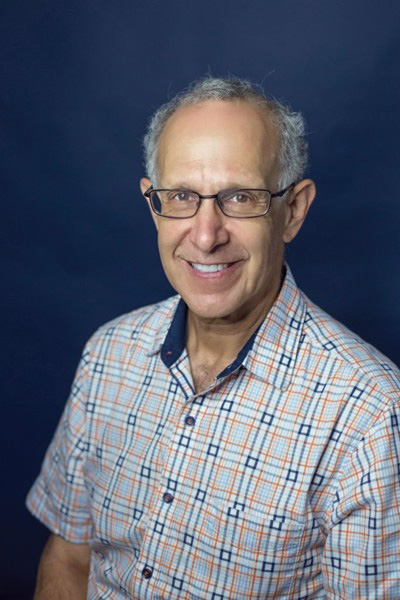Accounting for the Atmosphere
Lex Berk ’78 is the father of MODTRAN, a radiative transfer computer program used worldwide.
The first job Alexander “Lex” Berk ’78 took after graduate school and a couple of postdocs was at Spectral Sciences Inc., and his first task at his new job was to improve the accuracy of a widely used software model.
The software was called LOWTRAN, a computer program designed to simulate the atmospheric transmission of electromagnetic radiation—mostly infrared and visible light. LOWTRAN modeled the radiation signal that an optical sensor like a camera might see, accounting for the scattering, absorption and emission by particles and molecules.

The software “had low spectral resolution and only worked well if your sensor line-of-sight was close to the ground,” says Berk, a principal scientist at Spectral, “such as a thermal imager viewing the leaking of radiation from a building.”
Spectral Sciences had a contract to increase LOWTRAN’s resolution so that it could be applied to technology, such as the optical sensors on satellites that peer through the entire atmosphere. “It’s not like taking a picture on the ground, because the intervening atmosphere changes what the received optical signal is,” Berk explains. “So if you want to identify what you’re looking at, it’s difficult to do because you won’t receive the same radiation signal that you would if you were at ground level. You need models such as MODTRAN to account for the changes introduced by the atmosphere.”
Today, MODTRAN is used for a variety of applications, from military targeting and surveillance to characterizing the chemical contents of the atmosphere for use in climate and pollution studies. Berk hasn’t stopped upgrading the software and fielding questions about it in the 33 years he’s worked for Spectral Sciences.
Since Berk began work on the program, MODTRAN has grown from 5,000 to about 200,000 lines of code and now has tens of thousands of users in more than 60 countries. “It’s popular because it makes rapid calculations, and the science behind it is good, so it has become the standard the community has accepted,” Berk says.

At the heart of MODTRAN are complicated calculations, which drew Berk to the field of radiative transfer. He spent 25 years solving an integral used to calculate the attenuation of light, which was necessary when MODTRAN increased its spectral resolution to its current value, and the old methods for estimating the integral failed.
Twenty-five years is a long time, but Berk enjoyed the challenge. “I tend to gravitate toward mathematical problems when they arise. I still work on math problems that don’t have to do with my work when I have time,” he says.
Mathematical problems that Berk has worked on for MODTRAN and other radiative transfer software programs include finding a way to characterize absorption for a large range of wavelengths, from ultraviolet to visible to infrared to microwave and beyond, and to account for the refraction of light above the curved earth.
Over the last decade and a half, Berk has also worked on a program called MCScene. One of the limitations of MODTRAN, he explains, is that it assumes that the concentration of atmospheric constituents varies with altitude but not horizontally. This makes it difficult to model the radiation from inhomogeneous sources such as a partial cloud field. To remedy this, “MCScene solves the same kinds of radiative transfer equations [as MODTRAN] but it solves them in 3-D,” he says.
Many of Berk’s MODTRAN users are in the military. But he also receives questions on MODTRAN from scientists working on problems such as retrieving the amount of ozone or chlorofluorocarbons in the atmosphere. MODTRAN allows these researchers to work backward to find these amounts from their optical sensor measurements.
Berk credits his first-year chemistry professor at Harvey Mudd with turning him away from a career as a pure mathematician and toward science. “I went to Mudd wanting to study math, but he got me excited about chemistry, so I double-majored in chemistry and math.”
Berk says he was an “immature undergraduate” who had loved math since childhood. Mudd offered him the opportunity to focus on the type of problems he excelled at. “I have no idea where I would have ended up if it wasn’t for Harvey Mudd,” he says. “I was able to flourish in that environment, and I think I would have struggled in a more general education environment.”
The value of his Mudd education has stayed with him, says the man who spent 25 years solving a math problem. “When I went to graduate school, it was easy because of the foundation provided to me by Harvey Mudd,” Berk says. “I learned calculus there. And 40 years later, when colleagues need an integral solved, they come to me.”